Abstract
A laboratory study was conducted with the aim of evaluating and optimizing the environmental parameters of "landfarming", i.e., the disposal by biodegradation in soil of oily sludges generated in the refining of crude oil and related operations. Oil sludge biodegradation was monitored by CO2 evolution and by periodic analysis of residual hydrocarbons. The parameters studied were soil moisture, pH, mineral nutrients, micronutrients, organic supplements, treatment rate, teratment frequency, and incubation temperature. Oil sludge biodegradation was optimal at a soil water-holding capacity of 30 to 90%, a pH of 7.5 to 7.8, C:N and C:P ratios of 60:1 and 800:1, respectively, and a temperature of 20 degrees C or above. Addition of micronutrients and organic supplements was not beneficial; sewage sludge interfered with hydrocarbon biodegradation. Breakdown of the saturated hydrocarbon (alkane and cycloalkane) fraction was the highest at low application rates, but higher application rates favored the biodegradation of the aromatic and asphaltic fractions. An application rate of 5% (wt/wt) oil sludge hydrocarbon to the soil (100,000 liters/hectare) achieved a good compromise between high biodegradation rates and efficient land use and resulted in the best overall biodegradation rate of all hydrocarbon classes. Frequent small applications resulted in higher biodegradation than single large applications. Two 100,000-liter/hectare (255 barrels per acre) or four 50,000-liter/hectare oil sludge hydrocarbon applications per growing season seem appropriate for most temperate zone disposal sites.
Full text
PDF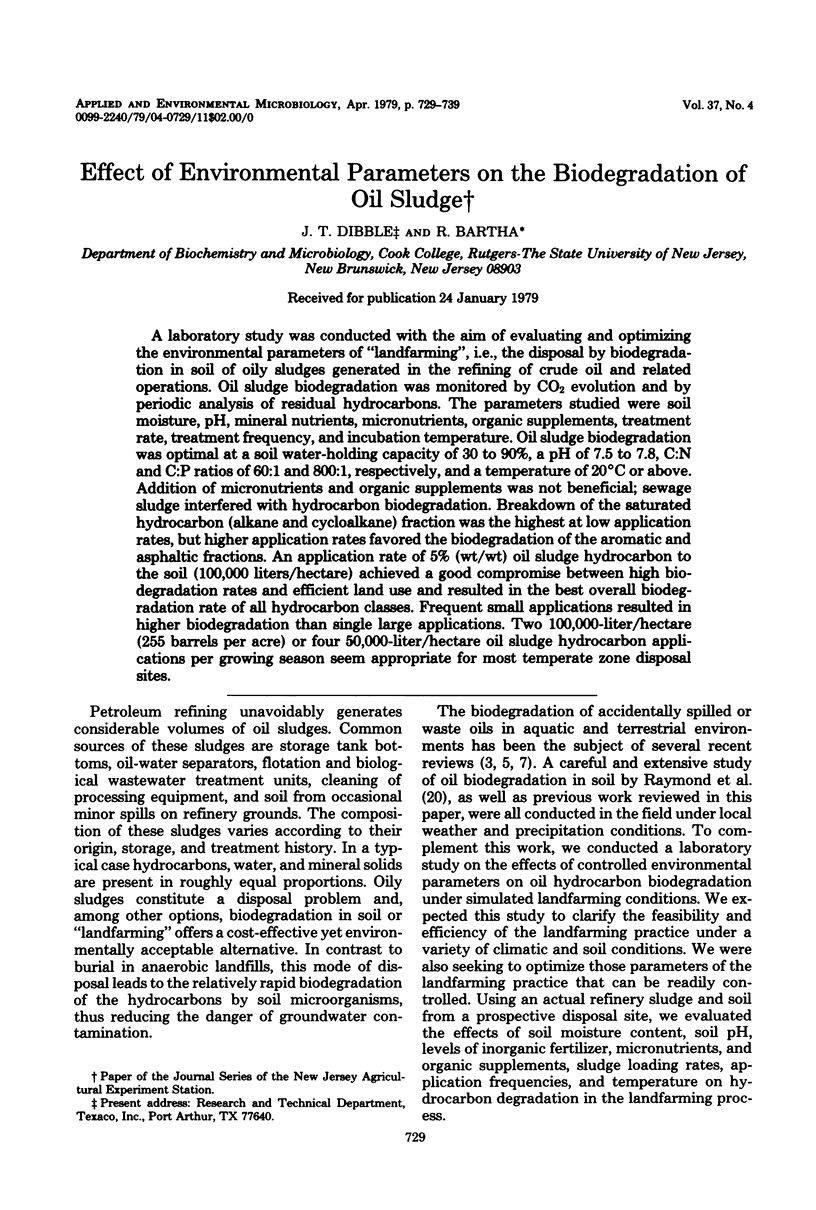
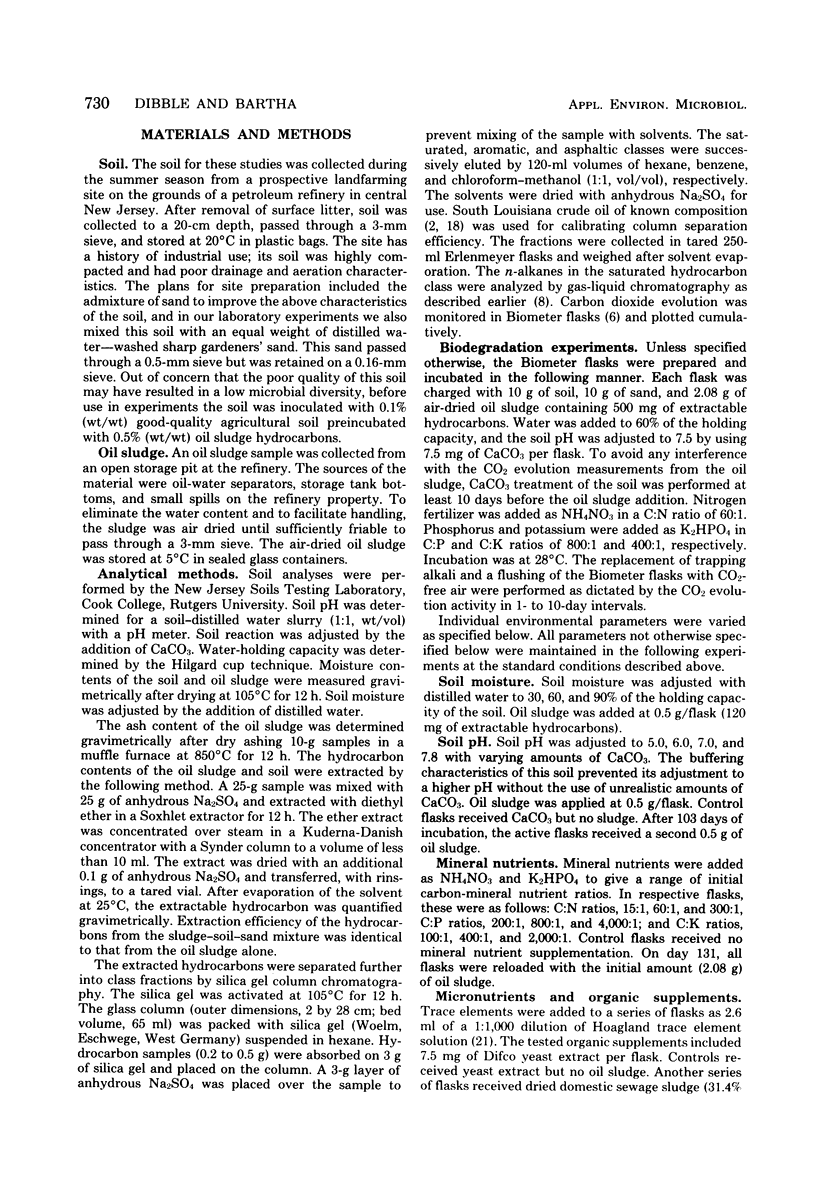
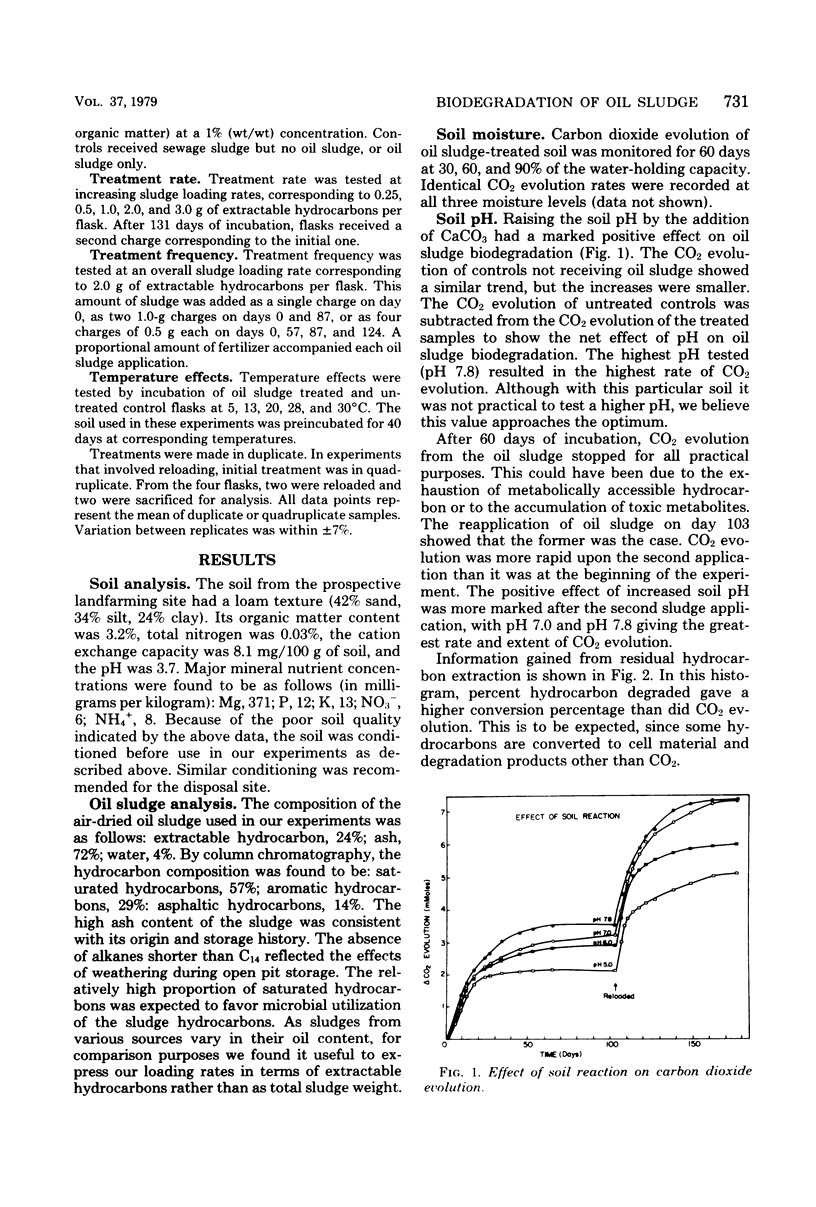
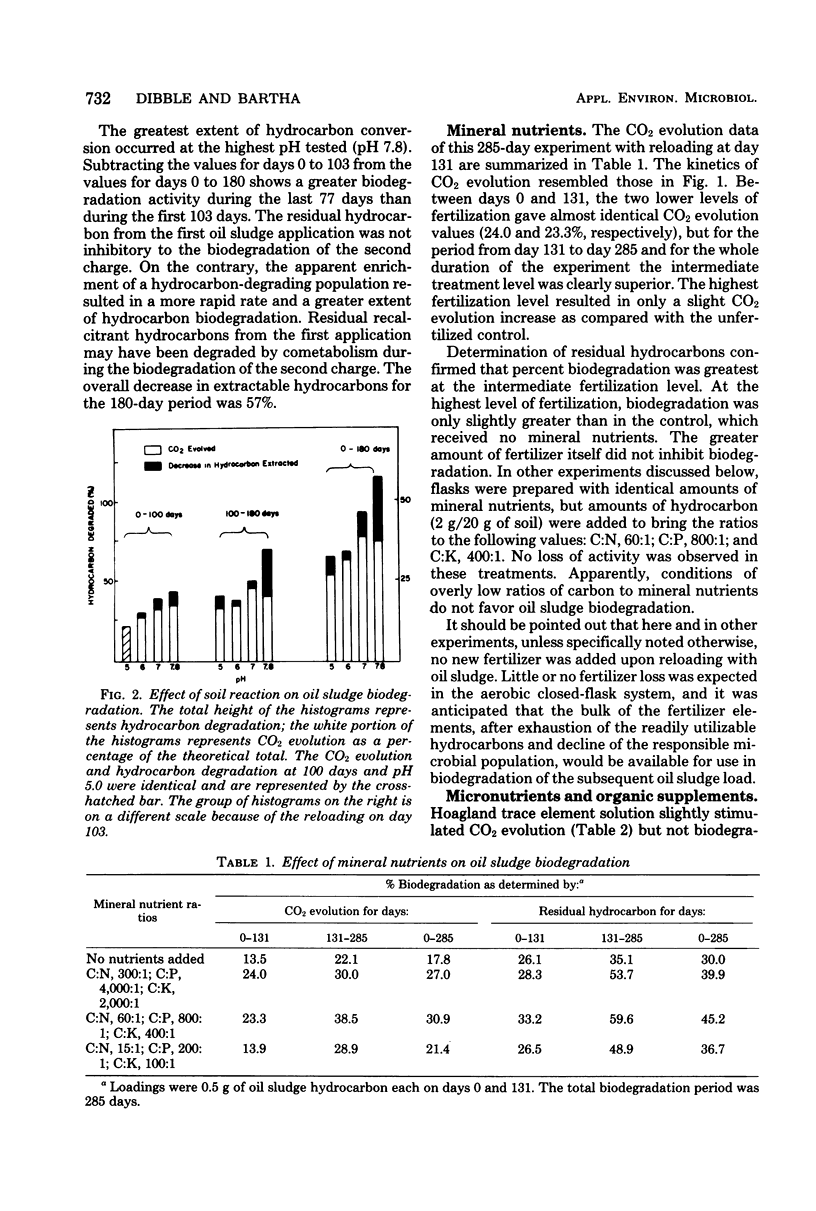
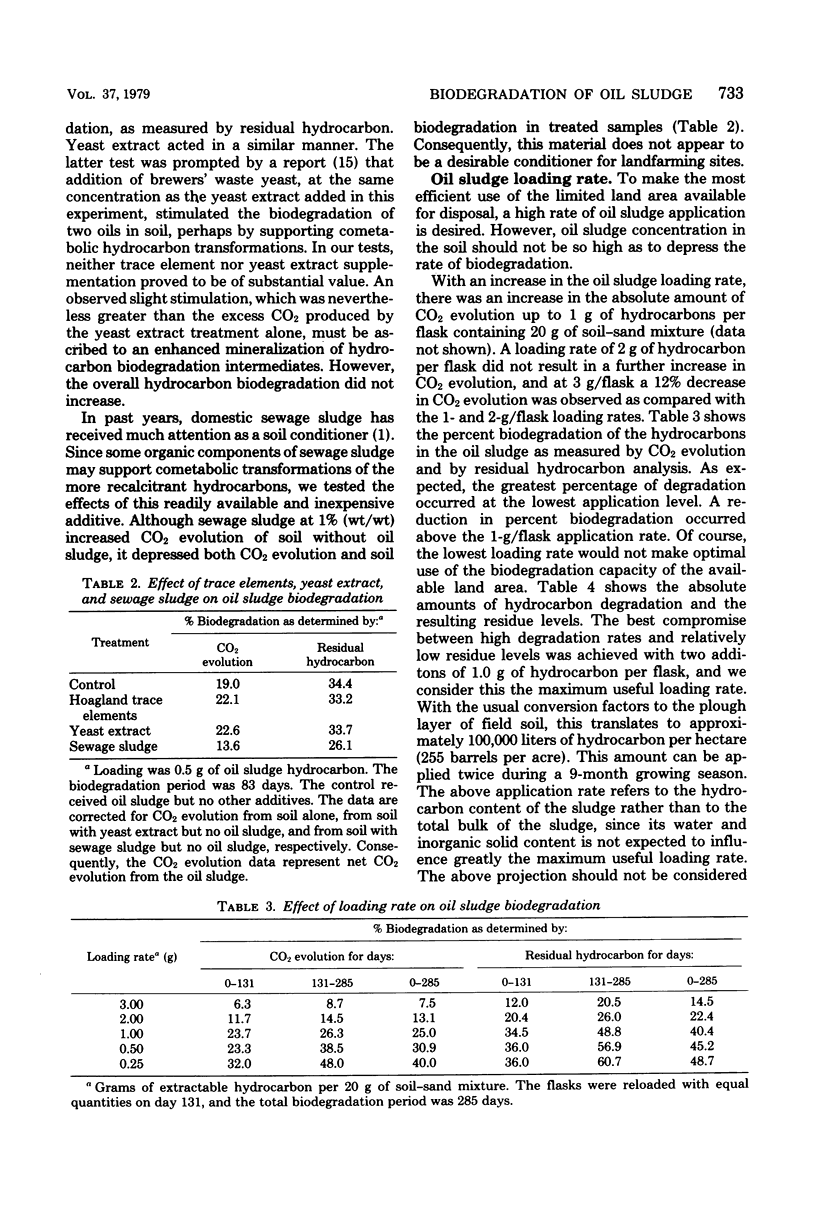
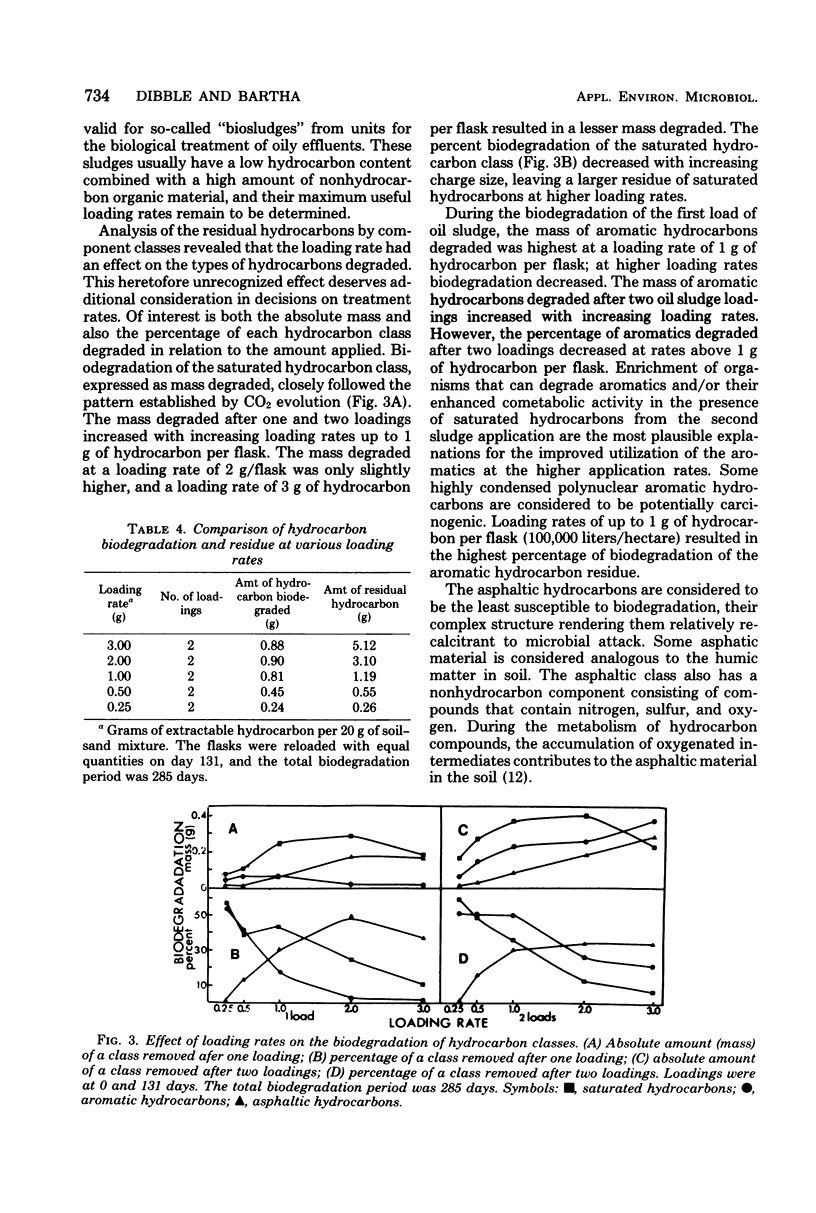
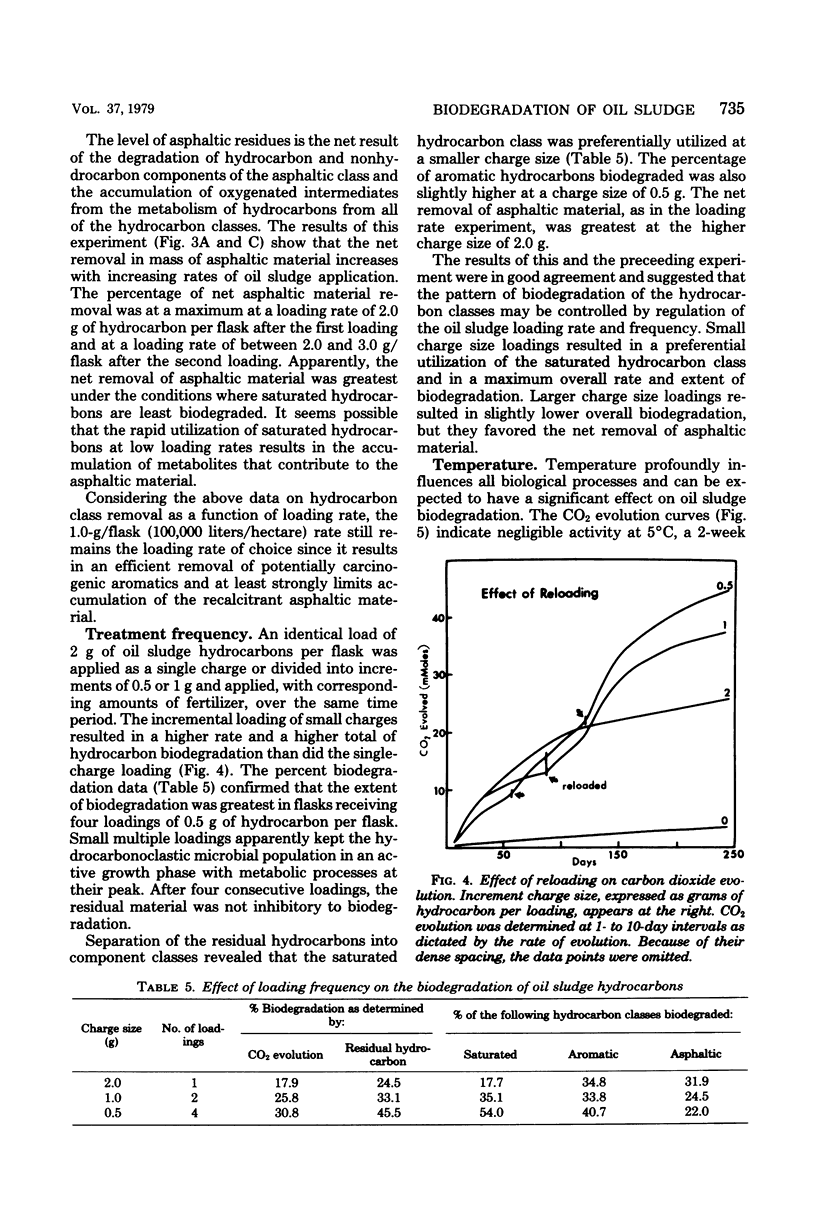
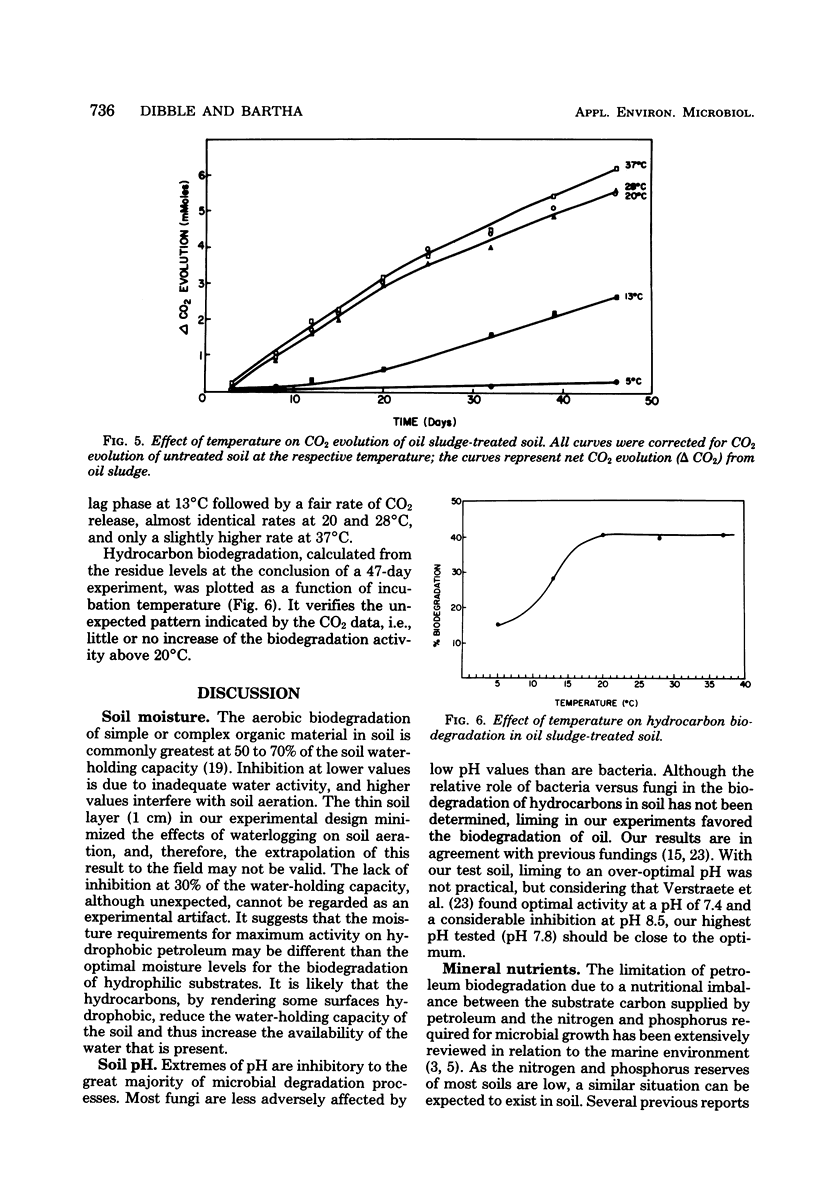
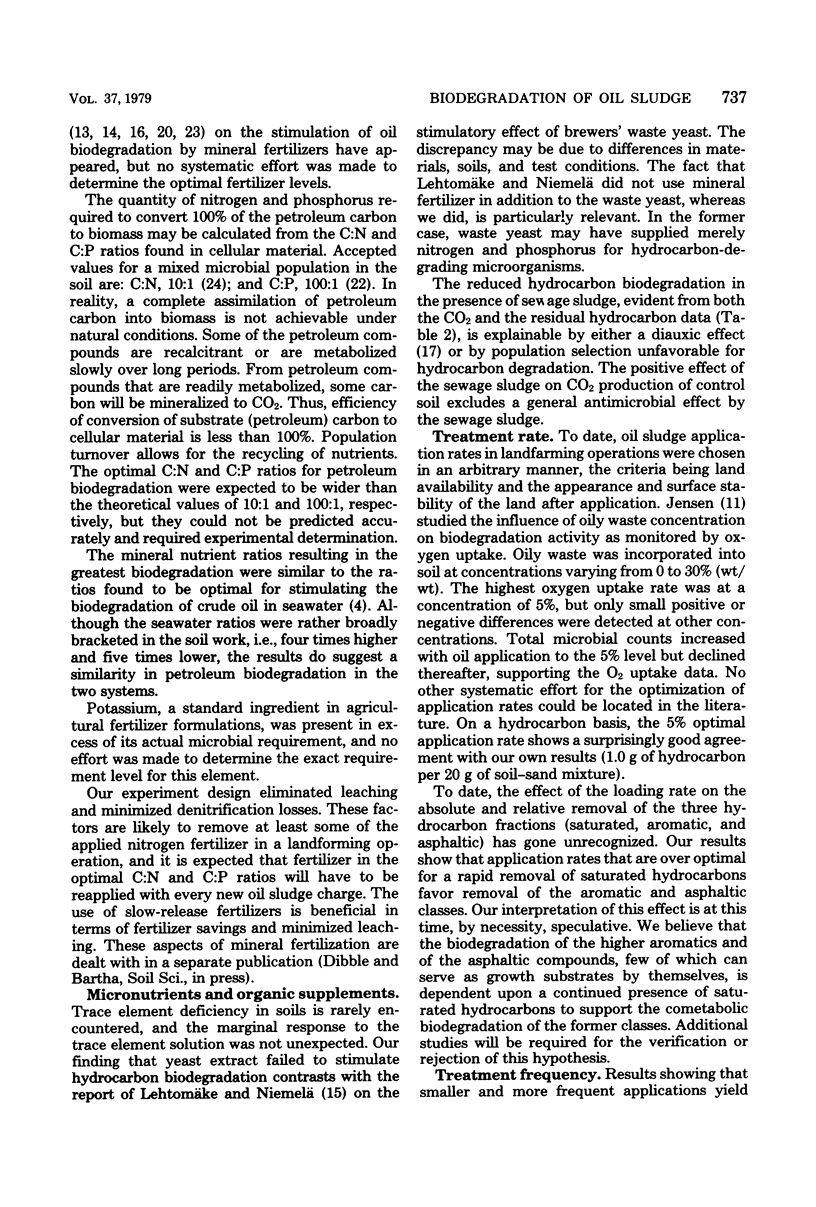
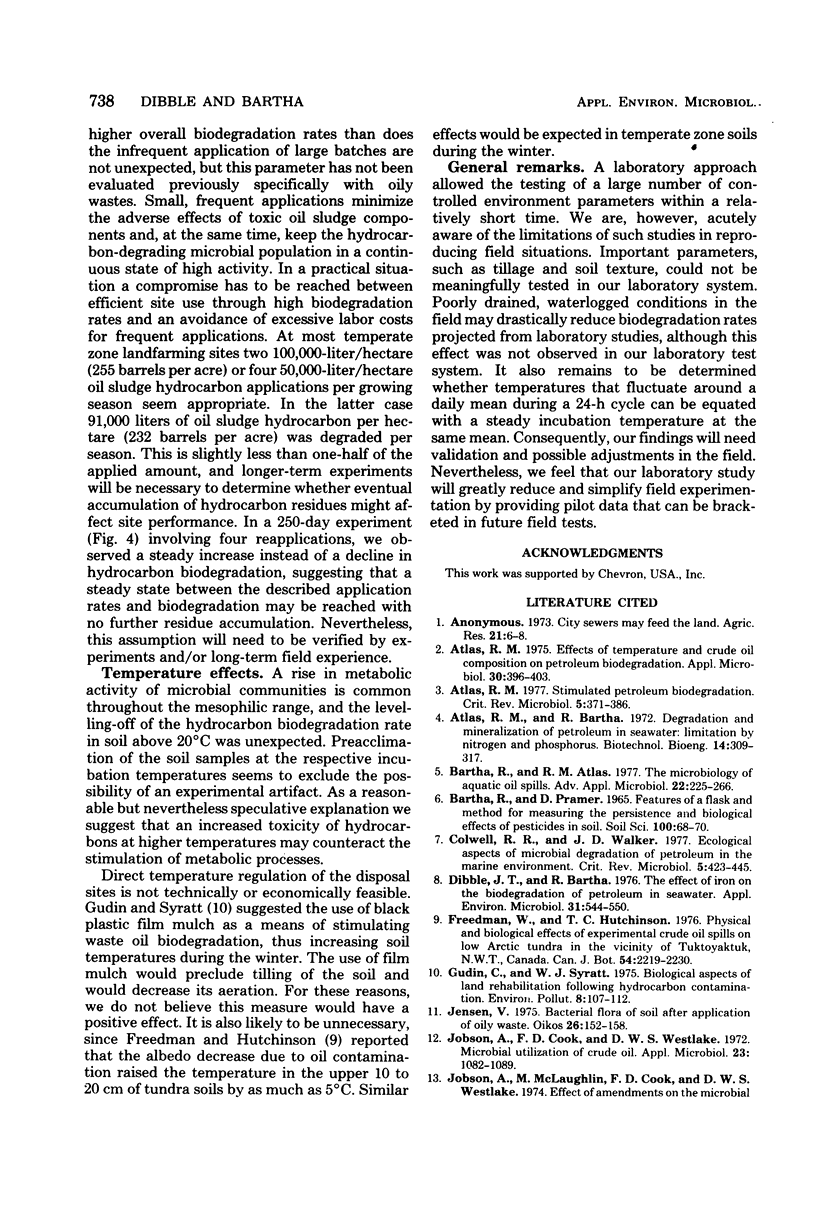
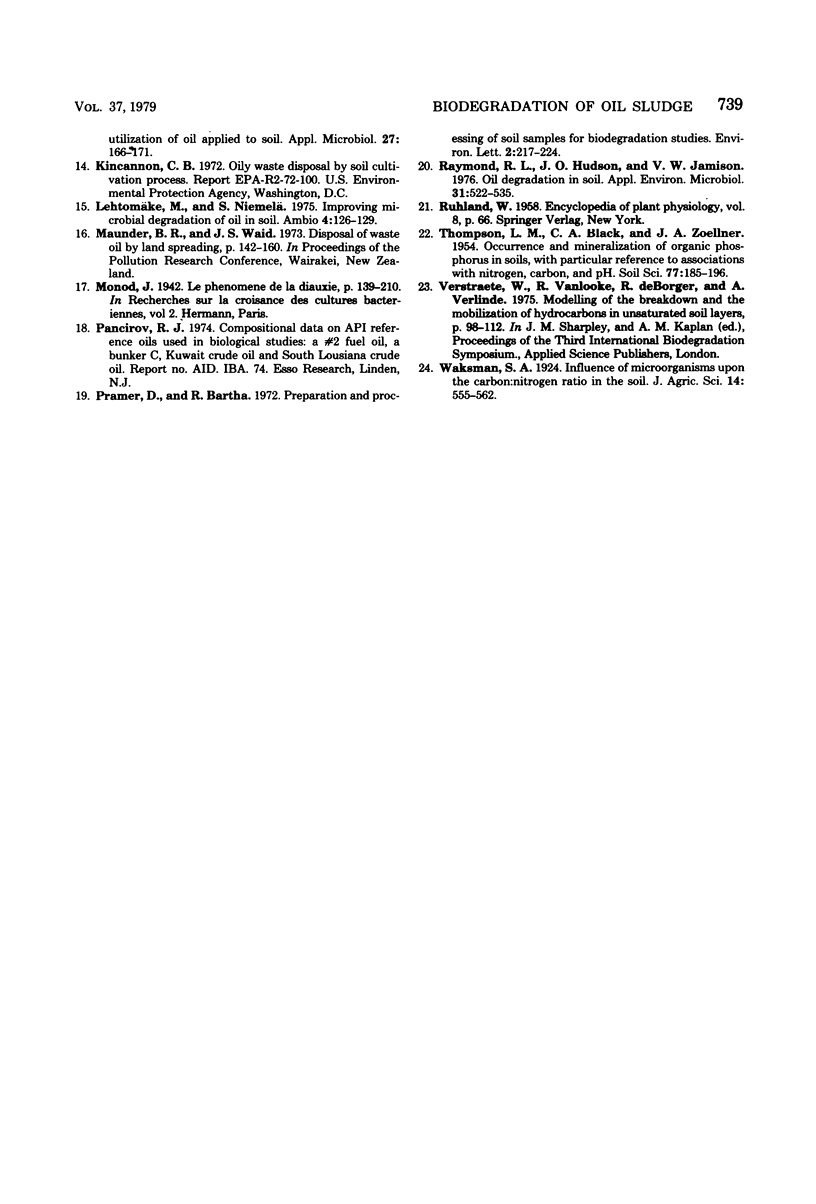
Selected References
These references are in PubMed. This may not be the complete list of references from this article.
- Atlas R. M., Bartha R. Degradation and mineralization of petroleum in sea water: limitation by nitrogen and phosphorous. Biotechnol Bioeng. 1972 May;14(3):309–318. doi: 10.1002/bit.260140304. [DOI] [PubMed] [Google Scholar]
- Atlas R. M. Effects of temperature and crude oil composition on petroleum biodegradation. Appl Microbiol. 1975 Sep;30(3):396–403. doi: 10.1128/am.30.3.396-403.1975. [DOI] [PMC free article] [PubMed] [Google Scholar]
- Atlas R. M. Stimulated petroleum biodegradation. CRC Crit Rev Microbiol. 1977 Sep;5(4):371–386. doi: 10.3109/10408417709102810. [DOI] [PubMed] [Google Scholar]
- Bartha R. The microbiology of aquatic oil spills. Adv Appl Microbiol. 1977;22:225–266. doi: 10.1016/s0065-2164(08)70164-3. [DOI] [PubMed] [Google Scholar]
- Colwell R. R. Ecological aspects of microbial degradation of petroleum in the marine environment. CRC Crit Rev Microbiol. 1977 Sep;5(4):423–445. doi: 10.3109/10408417709102813. [DOI] [PubMed] [Google Scholar]
- Dibble J. T., Bartha R. Effect of iron on the biodegradation of petroleum in seawater. Appl Environ Microbiol. 1976 Apr;31(4):544–550. doi: 10.1128/aem.31.4.544-550.1976. [DOI] [PMC free article] [PubMed] [Google Scholar]
- Jobson A., Cook F. D., Westlake D. W. Microbial utilization of crude oil. Appl Microbiol. 1972 Jun;23(6):1082–1089. doi: 10.1128/am.23.6.1082-1089.1972. [DOI] [PMC free article] [PubMed] [Google Scholar]
- Jobson A., McLaughlin M., Cook F. D., Westlake D. W. Effect of amendments on the microbial utilization of oil applied to soil. Appl Microbiol. 1974 Jan;27(1):166–171. doi: 10.1128/am.27.1.166-171.1974. [DOI] [PMC free article] [PubMed] [Google Scholar]
- Raymond R. L., Hudson J. O., Jamison V. W. Oil degradation in soil. Appl Environ Microbiol. 1976 Apr;31(4):522–535. doi: 10.1128/aem.31.4.522-535.1976. [DOI] [PMC free article] [PubMed] [Google Scholar]


